Velocity of Efflux
Step by step video solution for Velocity of Efflux by Physics experts to help you in doubts & scoring excellent marks in Class 12 exams.
Updated on:21/07/2023Similar Questions
A horizontally oriented tube AB of length l rotates with a constant angular velocity ω about a stationary vertical axis OO′ passing through the end A (figure). The tube is filled with an ideal fluid. The end A of the tube is open, the closed end B has a very small orifice. Find the velocity of the fluid relative to the tube as a function of the column "height" h.

View SolutionWater is filled to a height of 2.5m in a container lying rest on a horizontal surface as shown in the figure. The bottom of the container is square shaped of side √3 and its top is open. There is a very small hole in the vertical wall of the container near the bottom. A small cap closes the hole. The hole gets opened when pressure near the bottom becomes more than 4×104 pascal
a, What minimum acceleration can be given to the container in the positive x-direction so that the cap will come out of the hole? Assume water does not spill out of container when the container accelerates.
Find the velocity of efflux as soon as the container starts moving with the acceleration calculated in part a. of the question.
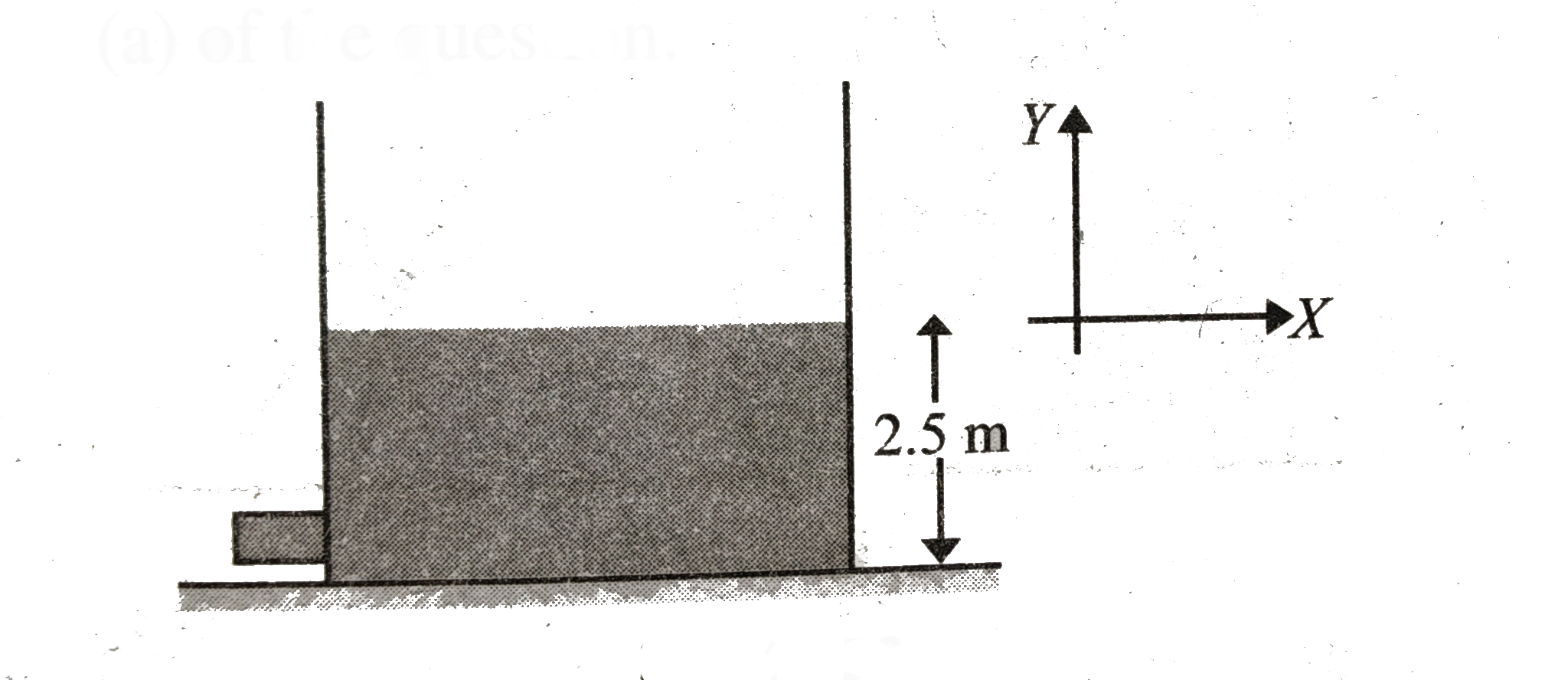
View Solution
Knowledge Check
Equal volume of two immiscible liquids of densities ρ and 2ρ are filled in a vessel as shown in the figure. Two small holes are punched at depths h/2 and 3h/2 from the surface of lighter liquid. If v1 and v2 are the velocities of efflux at these two holes, then v1/v2 is
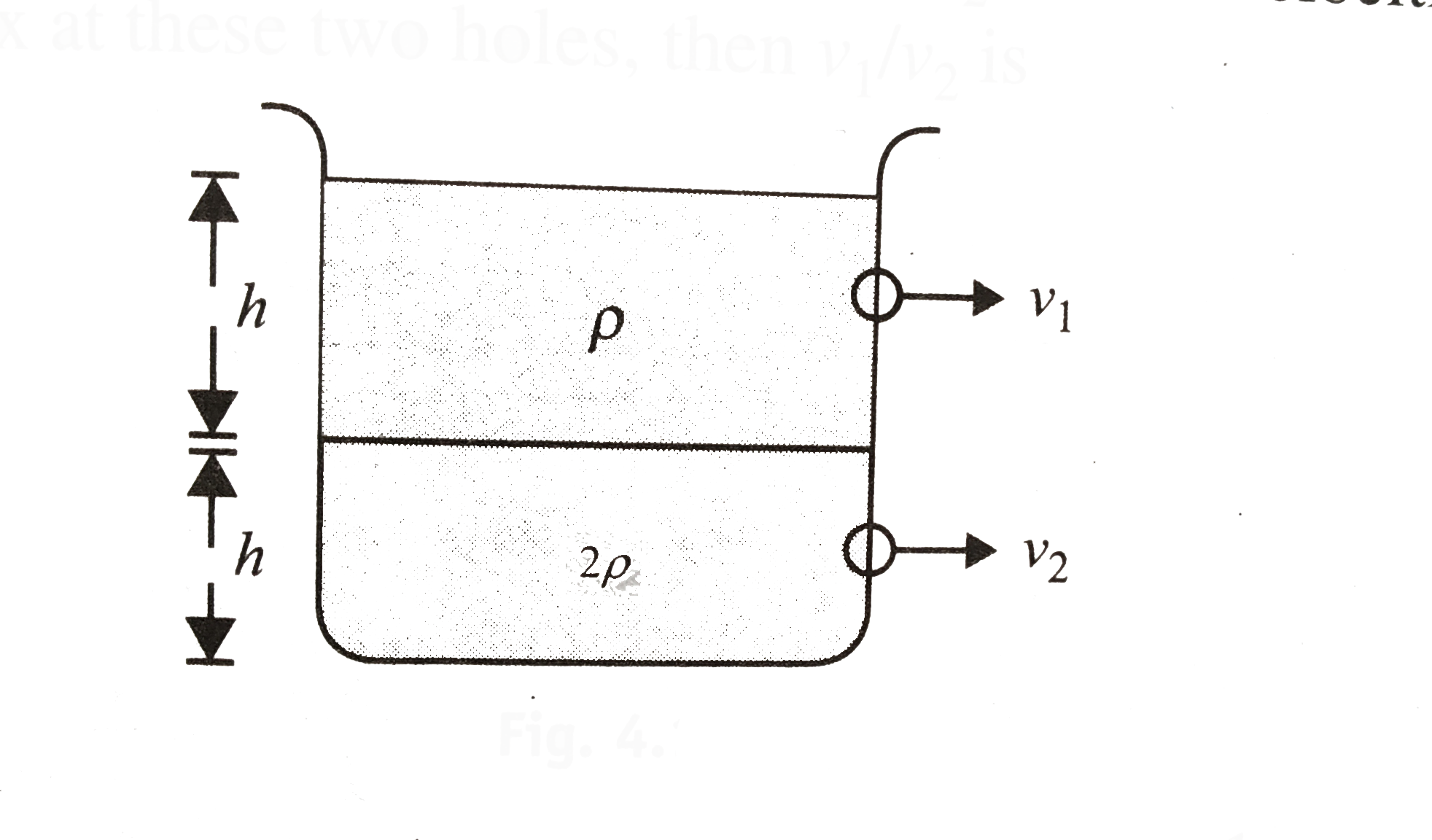 A12√2B12C14D1√2
A12√2B12C14D1√2Equal volume of two immissible liquid of densities ρ and 2ρ are filled in a vessel as shown in Fig. 7(CF).15. Two small holes are punched at depth h2 and 3h2 from the surface of lighter liquid. If v1 and v2 are the velocities of efflux at these two holes, then v1/v2 is
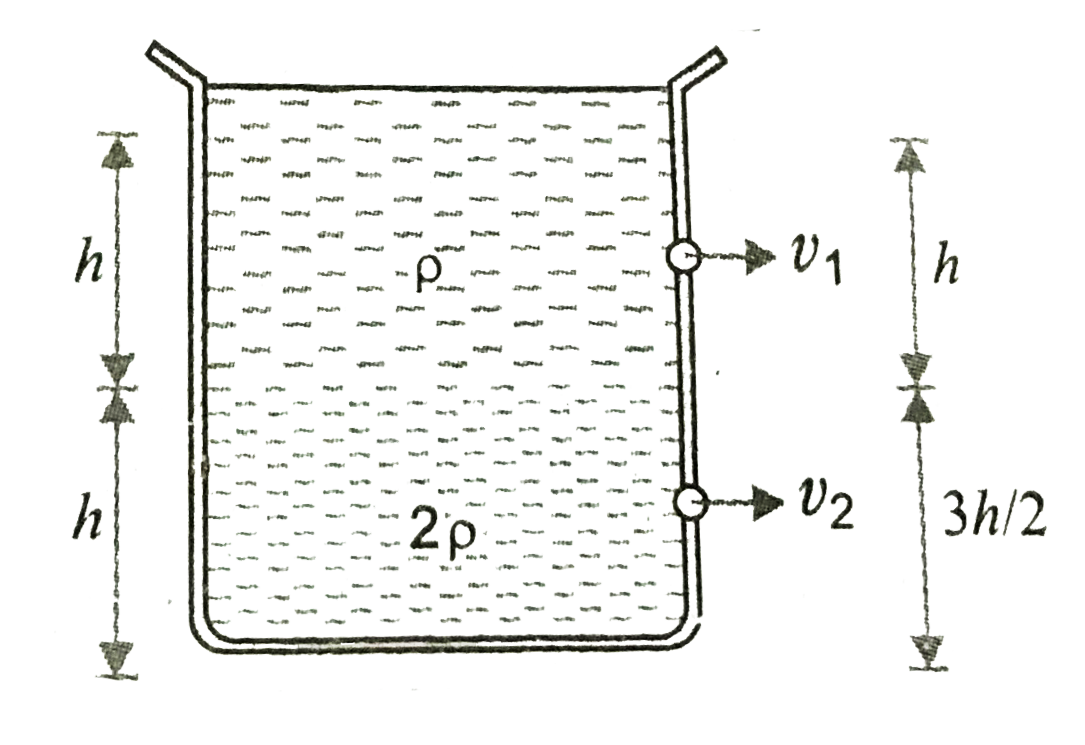 A14B12C1√2D12√2
A14B12C1√2D12√2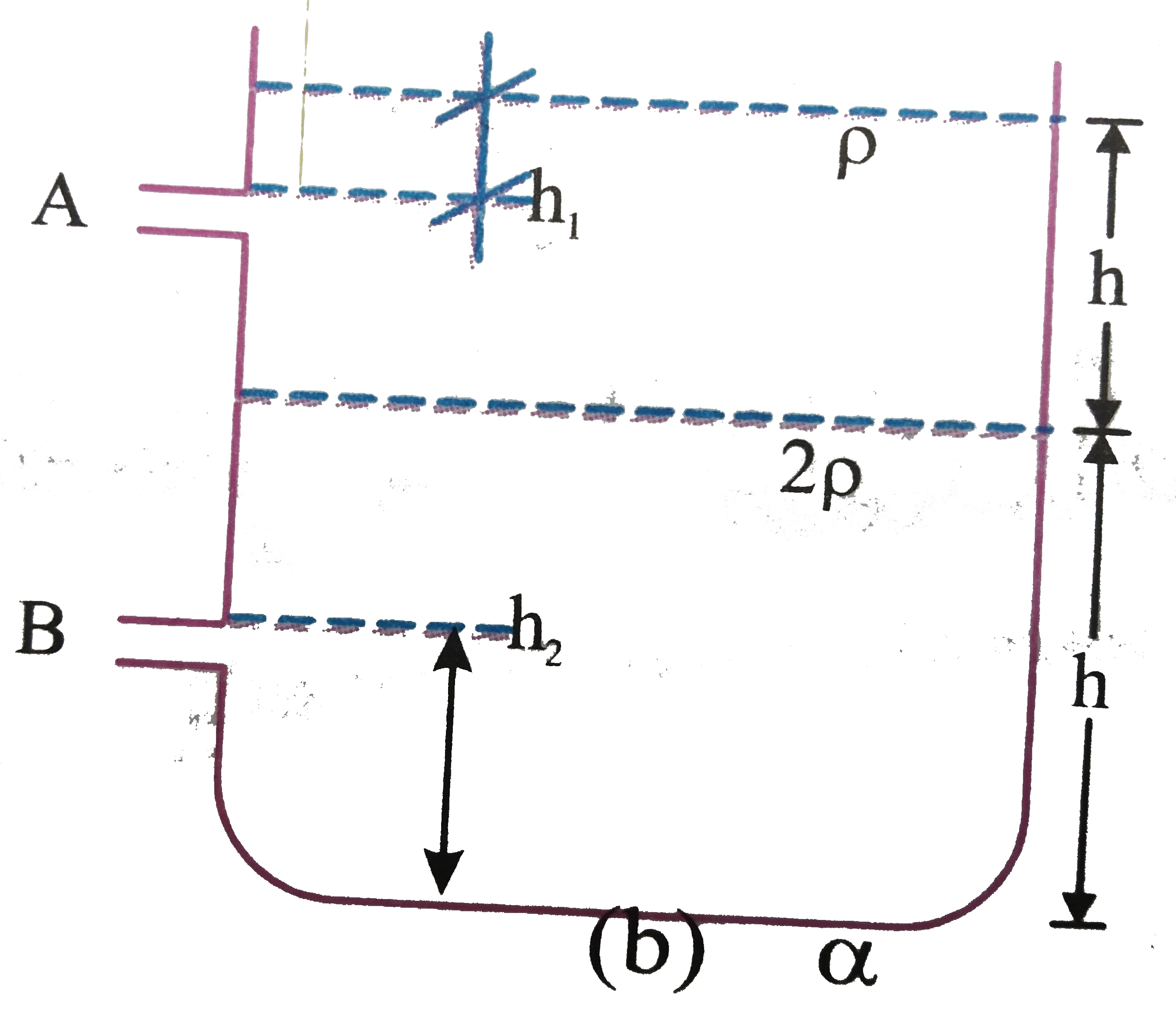
In the arrangement shown two liquids of density ρ and 2ρ are filled in a container the height of both liquids is h. there are two holes A and B at heights h1 and h2 from top liquid surface and bottom of the vessel. if V1 and V2 are the velocities of efflux at the two holes A and B respectively, find the correct graph.
Take =α(V2V1)2A B
B C
C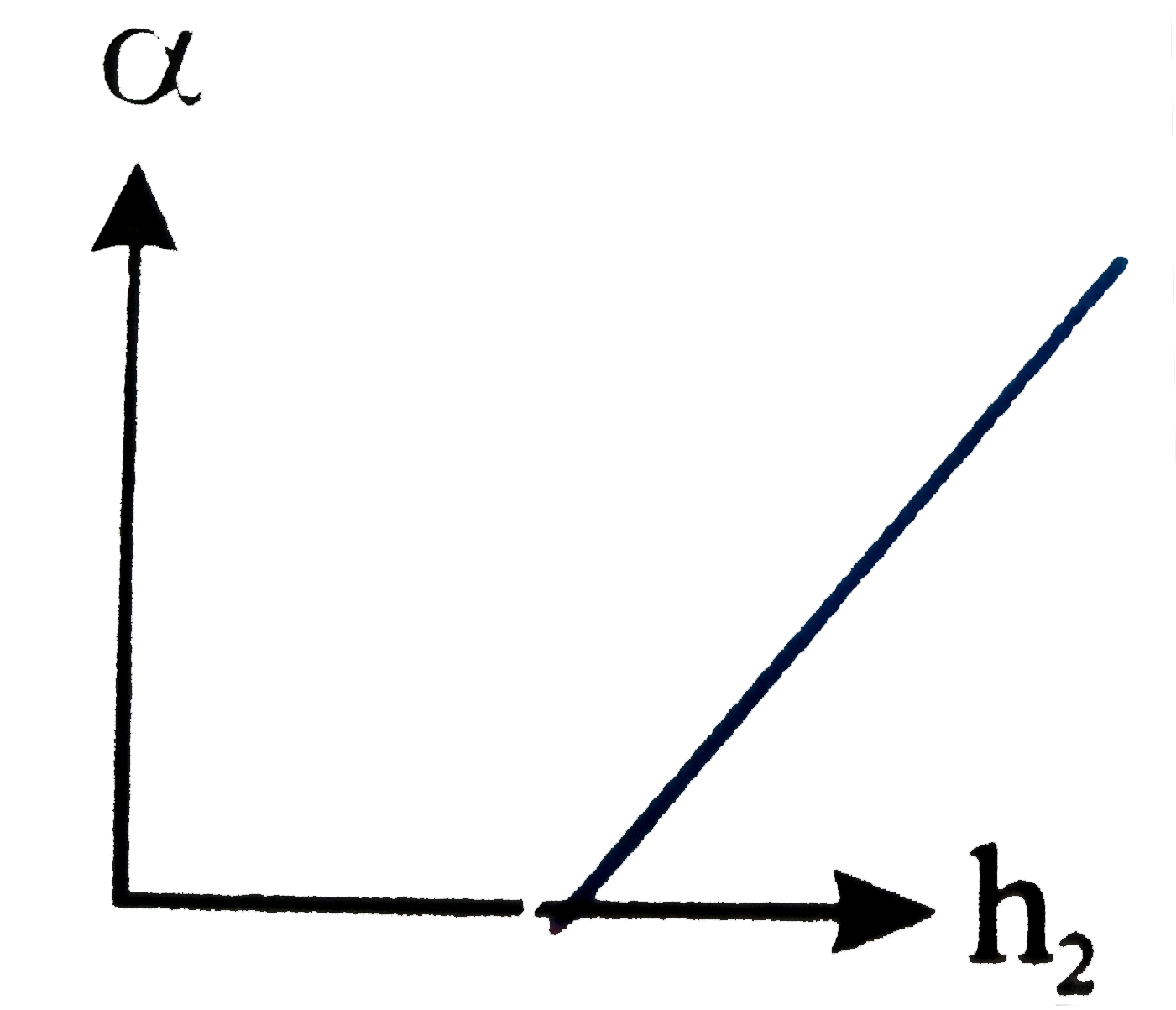 D
D
Equal volumes of two immiscible liquids of densities ρand2ρ are filled in a vessel as shown in figure. Two small holes are punched at depth h/2 and 3h/2 from the surface of lighter liquid. If v1andv2 are the velocities of efflux at these two holes then (v2v1)2 is

View SolutionEqual volumes of two immiscible liquids of densities ρ and 3ρ are filled in a big vessel. Two small holes are punched at depth h/3 and 4h/3 from upper surface of lighter liquid. If v1 and v2 are velocities of efflux at these two holes, then v1/v2 is

View SolutionTwo cylindrcal vesels placed on a horizontal table contain water and mercury respectively up to the same height. There is a small hole in the walls of each of the vessels at half the height of liquids in the vessels. Find out the ratio of the velocities of efflux of water and mercury from the holes. Whcih of the two jets of liquid will fall at a greater distance on the table from the vessel? Relative density of mercury with respect to water = 13.6
View SolutionEqual volumes of two immiscible liquids of density 2ρand4ρ , respectively , are filled in the vessel as shown in the figure. Two small holes are punched at depth h2and2h, respectively , from the surface of the lighter liquid. If v1andv2 are the velocities of efflux at these holes, then the ratio of v1v2 is
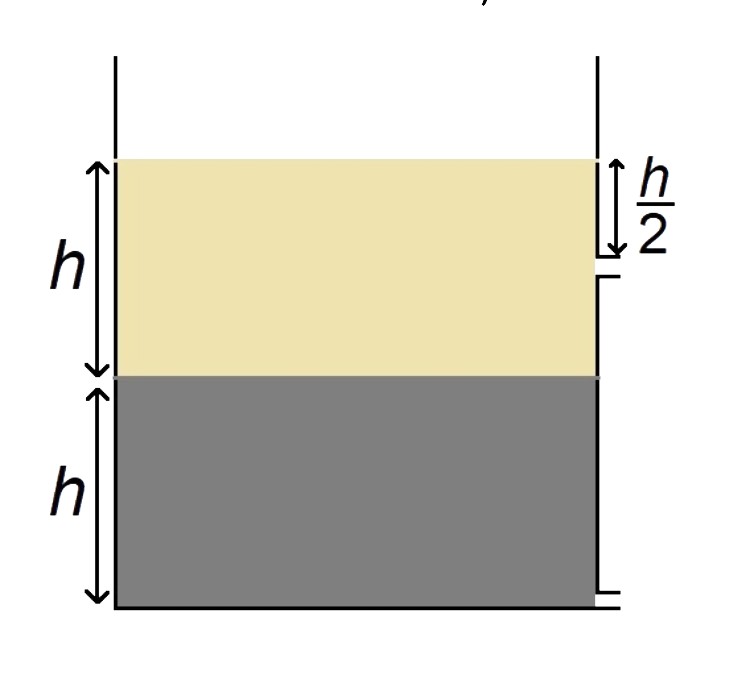
View SolutionTwo immiscible liquids of densities d and 2d are taken in a cylindrical vessel with equal heights each h. The velocity efflux of the liquid coming out of the hole made to the wall of the vessel at its bottom is
View Solution
